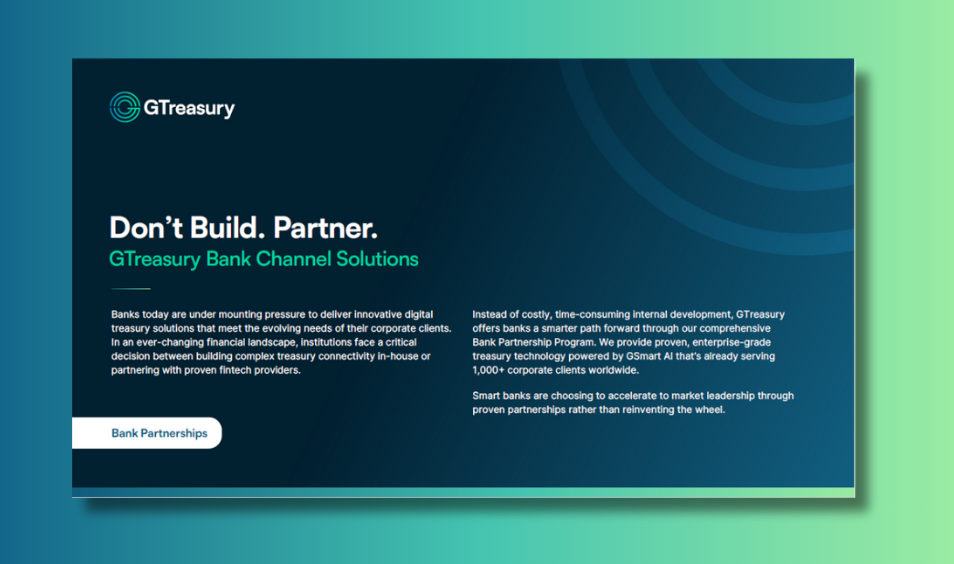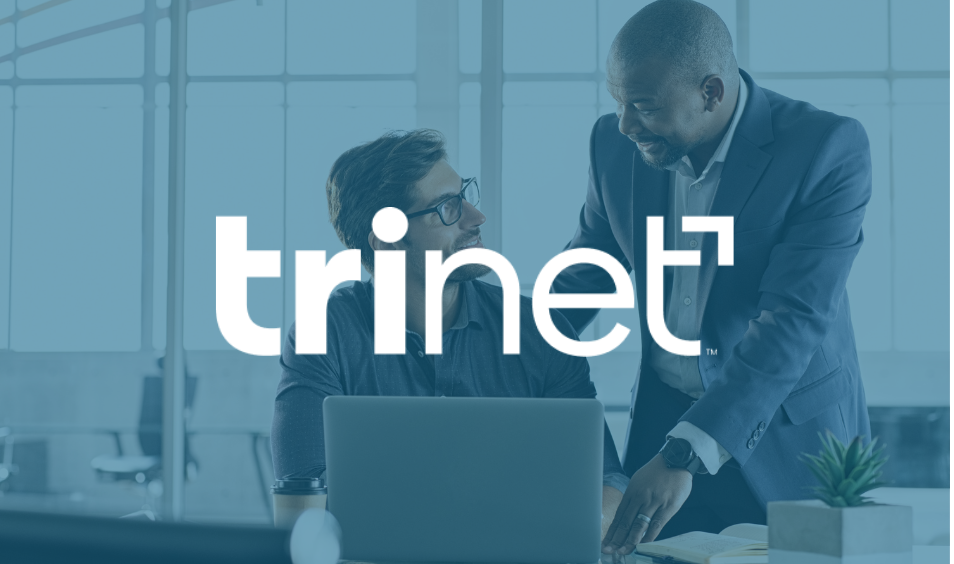The Treasury Leader's AI Glossary: Key Terms Every CFO and Treasurer Should Know


AI conversations in treasury are filled with jargon that can make even experienced financial leaders feel lost. You're constantly being pitched AI solutions, your CEO is asking about your AI strategy, and everyone seems to be speaking a different language.
Easily reference this glossary: it's organized by what matters most to treasury and finance leaders, with clear definitions and examples of why each term matters for your operations.
Start Here: The 3 AI Concepts You Must Understand
Before diving into the glossary, grasp these foundational principles:
- AI learns from data, not rules. Traditional software follows instructions you program, while AI discovers patterns in historical data and applies them to new situations.
- All treasury AI falls into three categories: Predictive (forecasting), Generative (writing reports), and Agentic (recommending actions).
- The golden rule: If you can't explain how the AI reached a conclusion, you can't use that conclusion in treasury.
Essential Terms: What You Must Know
These foundational concepts directly impact your ability to evaluate and implement AI in treasury. If you're just starting your AI journey, master these first.
Explainability (or Explainable AI)
What it means: The ability to understand and trace how AI arrived at a specific recommendation, with clear reasoning that connects outputs back to source data.
Why it matters for treasury: When your board asks why you made a liquidity decision or your auditors question a forecast adjustment, "the AI told me so" isn't an acceptable answer. You need to show exactly how the AI reached its conclusion, which data points it used, and what logic it applied. Without explainability, you can't meet audit requirements or maintain SOX compliance.
What to look for: AI solutions that provide audit trails, show their reasoning steps, and can trace every recommendation back to specific data points in your systems.
Black Box AI
What it means: AI systems that produce outputs or recommendations without revealing their reasoning process or decision-making logic.
Why it matters for treasury: Black box AI creates unacceptable risk in financial operations. You can't validate its recommendations, troubleshoot when something goes wrong, or meet regulatory or audit requirements. If you can't explain how a decision was made, you shouldn't be making that decision.
What to avoid: Any AI solution that responds with "proprietary algorithms" when you ask how it generates recommendations or can't provide detailed documentation of its decision logic.
Machine Learning (ML)
What it means: AI that learns from historical data to identify patterns, make predictions, and improve accuracy over time without being explicitly programmed for each scenario.
Why it matters for treasury: ML powers most practical treasury AI applications today, particularly in forecasting. It can analyze years of customer payment behavior, identify seasonal patterns, and predict future cash flows with increasing accuracy as it processes more data.
Important caveat: ML needs data to learn patterns. For example, a model with 3 months of data will be less accurate than one with 3 years. Expect a 6-12 month learning period where accuracy improves as it processes real-world results.
Real treasury example: An ML model analyzes three years of AR data and learns that Customer A consistently pays 5 days early in Q4 (probably to close their books), while Customer B extends to 45 days in Q1 (cash flow challenges after holiday season). This intelligence dramatically improves short-term cash forecasting.
Generative AI
What it means: AI that creates new content (text, narratives, summaries, explanations) based on patterns learned from training data.
Why it matters for treasury: Generative AI can transform hours of manual report-writing into seconds of automated narrative creation. It excels at explaining complex financial variances in plain language, drafting executive summaries, and creating board-ready presentations.
Real treasury example: After your monthly variance analysis, generative AI writes: "October cash collections fell $3.2M short of forecast due to three primary factors: Healthcare segment customers delayed $1.8M in payments citing budget approval cycles, EMEA operations saw $900K in extended payment terms due to regional economic uncertainty, and $500K in expected early payments didn't materialize as customers optimized their own working capital."
Agentic AI
What it means: AI that acts autonomously as a strategic teammate, capable of reasoning through complex problems, discovering patterns independently, and recommending specific actions based on analysis.
Why it matters for treasury: This represents the next evolution beyond simple automation. Agentic AI proactively identifies issues, analyzes scenarios, and suggests strategic actions. Think of it as a senior analyst who continuously monitors your treasury operations and brings you insights you didn't know to look for.
Real treasury example:
Without Agentic AI: You run a weekly report on payment trends. You review it manually and decide if action is needed.
With Agentic AI: The system notices on Tuesday that EMEA customers are extending terms (trend started 3 weeks ago), calculates this creates a $2.1M liquidity gap by month-end, models three solutions, and recommends: "Contact EMEA's top 5 customers with a 2% early payment discount. Historically 4 of 5 accept, which solves 73% of the gap."
Deterministic vs. Non-Deterministic Systems
What it means: Deterministic systems produce the same output every time you provide the same input (like Excel formulas). Non-deterministic systems produce outputs based on probabilities and patterns, meaning results can vary slightly even with identical inputs.
Why it matters for treasury: This concept helps you understand why AI feels "weird" compared to your spreadsheets. Traditional treasury systems are deterministic: same input, same output, every time. AI is non-deterministic because it's working with probabilities and patterns. This doesn't mean it's unreliable; it's differently reliable. Understanding this difference helps you set appropriate expectations and use AI effectively alongside traditional tools.
Real treasury example: A traditional aging report always shows Customer X's balance as 45 days overdue. An AI forecast might predict payment in 5-7 days based on historical patterns, confidence level, and current behavior signals. The range reflects probability, not imprecision.
Ground Truth / Data Validation
What it means: The verified, source-of-truth data that AI predictions are based on and tested against. Ground truth is what actually happened (or what's documented in your systems), not what the AI thinks or assumes.
Why it matters for treasury: This is your primary defense against AI hallucination and your foundation for audit compliance. When your AI forecasts that Customer X will pay $500K on November 30th, you need to see the actual invoices, payment history, and transaction patterns that informed that prediction. "The AI said so" doesn't satisfy auditors or your CFO, but "the AI analyzed these specific transactions and identified this pattern" does.
Ground truth also protects you from cascading errors. If an AI makes predictions based on faulty assumptions or outdated data and you can't see the underlying data, you won't catch the problem until it's too late. With proper data validation, you can spot when something doesn't look right before making critical liquidity decisions.
What to look for: AI systems that display source data alongside predictions, not buried in separate reports. You should be able to see exactly what transactions, payment histories, and patterns the AI analyzed to reach its conclusion. The system should show you when predictions deviate significantly from historical patterns and let you verify the transactions behind any forecast.
Red flag: Any AI solution that shows predictions without the underlying data or makes you submit a support ticket to understand how it reached a conclusion. If you can't validate the AI's reasoning in real-time, you shouldn’t trust it for financial decisions.
Real treasury example: Your AI predicts Customer X will pay 10 days late this month. A properly grounded system shows you: "Based on 18 months of payment history showing X paid late 7 of the last 8 times during Q4, with average delay of 12 days. Most recent payment: 45 days ago, 11 days late." You can immediately validate whether that pattern matches your relationship knowledge and decide if the prediction is reliable.
Essential Security and Compliance Terms
Understanding these terms is necessary for evaluating whether an AI solution meets your security requirements and regulatory obligations.
Zero Trust Architecture
What it means: A security model that assumes no user, device, or system should be automatically trusted, even inside your network perimeter. Every access request is verified, authenticated, and authorized based on strict policies.
Why it matters for treasury: Treasury systems contain your most sensitive financial data: bank account details, cash positions, investment strategies, and exposure information. Zero Trust Architecture ensures that even if one part of your system is compromised, the damage is contained because no component has blanket access to everything.
What to look for: AI solutions that use role-based access controls, continuously authenticate requests, employ the principle of least privilege (systems only access what they absolutely need), and log all interactions for audit purposes.
Data Sovereignty
What it means: The principle that data is subject to the laws and regulations of the country or region where it's physically stored, not where it's accessed from.
Why it matters for treasury: If you operate globally, you need to comply with different data regulations in different regions. For example, GDPR in Europe has strict requirements about where personal and financial data can be stored and processed. Some countries prohibit financial data from leaving their borders, and data sovereignty violations can result in massive fines and regulatory action.
What to look for: AI solutions that allow you to control exactly where your data is stored, process data regionally when required, and provide clear documentation of data flows across regions.
Customer Data Isolation
What it means: A security architecture where each customer's data and AI processing are completely separated from other customers, ensuring no cross-contamination of information, insights, or outputs.
Why it matters for treasury: This addresses a fundamental concern: "Is my competitor using AI that learned from my data?" With proper customer data isolation, your payment patterns, customer behaviors, and treasury strategies remain completely separate from other organizations. Your data generates insights only for you.
What to look for: AI solutions that explicitly state they maintain data isolation, process each customer's information separately, and never pool data across clients for model training or insight generation.
Inference-Only AI
What it means: AI that only uses existing models to make predictions or recommendations (inference) without training or updating those models based on your data.
Why it matters for treasury: This is essential for data privacy. With inference-only AI, your sensitive financial information is used to generate insights for you but never incorporated back into the AI's learning process. Your payment histories, customer data, and treasury strategies don't become part of the AI's knowledge base or benefit other users.
What to look for: Clear documentation that your data is never used for model training, explicit inference-only policies, and verification mechanisms you can audit.
Encryption Standards
What it means: The specific methods used to scramble data so it's unreadable to unauthorized parties, both when stored (at rest) and when transmitted (in transit).
Why it matters for treasury: Different encryption standards offer vastly different levels of security. Weak encryption is almost worse than no encryption because it gives false confidence.
What to look for:
- Data in transit: TLS 1.2 or higher with modern cipher suites (AES-GCM, ECDHE, SHA-384)
- Data at rest: AES-256 encryption with rigorous key management and regular key rotation
- Compliance with SWIFT Customer Security Controls Framework (CSCF) if you're in banking
Important Technical Terms
These concepts help you understand how AI actually works in treasury applications and evaluate vendor claims.
Training vs. Inference
What it means: Training is when AI learns from data to build its models. Inference is when the AI applies those learned models to make predictions or recommendations on new data.
Why it matters for treasury: This distinction is essential for data privacy. You want treasury AI that uses inference (applying existing knowledge to your data) without training on your data (incorporating your information into its learning). Training on client data means your sensitive information could influence how the AI works for other users.
What to look for: Explicit policies stating that your data is only used for inference, not training. Ask vendors directly: "Does my data ever train or update your AI models?"
Fuzzy Logic
What it means: AI's ability to work with nuance rather than rigid yes/no classifications.
Why it matters for treasury: Customer payment behavior rarely follows strict rules. A customer doesn't "always pay in 30 days" or "always pay late." Fuzzy logic enables more realistic modeling of customer behavior by understanding that Customer A is "usually reliable but occasionally pays late during Q1" instead of just labeling them "good payer" or "bad payer." Most treasury AI uses this under the hood. You don't need to understand the math; just know it enables better predictions.
Real treasury example: Instead of categorizing a customer as simply "good payer" or "bad payer," fuzzy logic might score them as "0.8 reliable" with nuanced understanding that they're typically reliable but occasionally extend terms during their Q1 budget constraints.
Statistical Modeling
What it means: Using mathematical techniques to analyze data patterns, understand relationships between variables, and make predictions based on probability.
Why it matters for treasury: This is the foundation of accurate forecasting. When vendors claim "30% improvement in forecast accuracy," they're usually talking about statistical models that identify correlations between factors like seasonality, customer behavior, economic indicators, and actual cash flows.
What to look for: Vendors who can explain which statistical techniques they use (regression analysis, time series modeling, etc.) and how they validate model accuracy. Be skeptical of vague claims without methodology.
Auditability and Audit Trails
What it means: The ability to track and verify every action, decision, and data change within a system, creating a comprehensive record that can be reviewed by auditors.
Why it matters for treasury: SOX compliance requires detailed audit trails for financial systems. You need to prove who accessed what data, when decisions were made, what data informed those decisions, and how systems were configured. AI systems must maintain the same rigorous audit standards as traditional treasury systems.
What to look for: Unique identifiers for every AI interaction (trace IDs), timestamped logs of all activities, ability to reconstruct exactly what data and logic produced any specific recommendation, and retention of audit logs for required compliance periods.
Terms You'll Hear in Vendor Pitches
These concepts frequently appear in AI discussions. Understanding them helps you evaluate vendor claims and ask informed questions.
Natural Language Processing (NLP)
What it means: AI's ability to understand, interpret, and generate human language in a way that's natural and contextually appropriate.
Why it matters for treasury: NLP powers features like asking your treasury system questions in plain English ("Show me customers who paid late in Q3"), automated reading of unstructured documents (extracting payment terms from contracts), and generating narrative explanations of financial variances.
Questions to ask vendors: How accurate is your NLP with financial terminology? Can it handle treasury-specific language and acronyms? What happens when it doesn't understand a query?
Large Language Models (LLMs)
What it means: Massive AI models trained on enormous amounts of text data that can understand context, generate human-like text, and perform various language tasks.
Why it matters for treasury: LLMs power many modern generative AI capabilities, from drafting reports to answering questions about your treasury operations. When properly deployed with enterprise controls (tenant isolation, regional data residency, inference-only operation), LLMs are highly effective for treasury applications.
Questions to ask vendors:
- How is the LLM deployed? (Look for: dedicated tenant isolation, regional deployment options)
- Is your data used only for inference, or does it train/update the models?
- How is the model grounded in treasury-specific data to prevent hallucinations?
- What controls ensure sensitive financial data stays within your security boundaries?
What good deployment looks like: Enterprise LLM deployments should keep your data in your tenant, allow regional deployment for data sovereignty compliance, operate in inference-only mode, and ground outputs in your actual treasury data to ensure accuracy and prevent hallucinations.
AI Hallucination
What it means: When AI generates false or fabricated information that sounds plausible but isn't based on actual data or facts.
Why it matters for treasury: This is a significant risk in financial applications. An AI that "hallucinates" a cash balance or fabricates a customer payment pattern could lead to disastrous decisions. This is why explainable AI with full traceability to source data is so important.
What to look for: AI systems with strong grounding mechanisms that link every output to specific data sources, validation checks to catch inconsistencies, and clear confidence scores on predictions.
Emerging Governance and Regulatory Terms
These concepts are increasingly important as AI regulation evolves, particularly in financial services.
AI Governance
What it means: The frameworks, policies, and processes that ensure AI is developed and used responsibly, ethically, and in compliance with regulations.
Why it matters for treasury: Boards and regulators are increasingly focused on AI governance. You need clear policies on who can deploy AI, how AI decisions are validated, what controls prevent misuse, and how you ensure compliance. Many organizations now have the CEO directly overseeing AI governance.
What to implement: Document your AI use cases, establish approval processes for new AI deployments, define who's accountable for AI decisions, create incident response plans, and regularly review AI performance and compliance.
Model Drift
What it means: When an AI model's accuracy degrades over time because the real-world patterns it learned from have changed.
Why it matters for treasury: Payment behaviors change, economic conditions shift, and customer patterns evolve. An AI model trained on pre-pandemic data might perform poorly in a post-pandemic environment. You need systems that detect drift and either retrain models or alert you when accuracy declines.
What to look for: AI solutions that continuously monitor model performance, compare predictions against actuals, and alert you when accuracy drops below acceptable thresholds.
EU AI Act
What it means: Comprehensive European regulation (effective 2026) that classifies AI systems by risk level and imposes requirements based on that classification, with significant penalties for non-compliance.
Why it matters for treasury: If you operate in Europe or serve European customers, your treasury AI systems will need to comply. The good news is that most treasury AI applications are classified as "low risk" or "minimal risk," but you still need transparency, human oversight, and proper documentation.
What to look for: AI vendors who are actively preparing for EU AI Act compliance, have risk classification documentation ready, and can demonstrate alignment with the regulation's transparency and governance requirements.
Risk Classification
What it means: The process of evaluating AI systems to determine their potential risk level, typically ranging from minimal risk to unacceptable risk, often required by emerging AI regulations.
Why it matters for treasury: Different risk levels trigger different compliance requirements. Treasury AI is generally lower risk than AI making fully autonomous trading decisions or credit approval decisions, but you still need to document the classification and ensure appropriate controls are in place.
What to do: Work with your legal and compliance teams to classify your treasury AI applications, document the rationale, and implement controls appropriate to the risk level.
Your AI Vendor Evaluation Scorecard
Transform this glossary into action with these requirements while evaluating treasury AI applications:
Must-Haves:
- Explainability with full audit trails
- Customer data isolation
- Inference-only (not training on your data)
- AES-256 + TLS 1.2+ encryption
Strong Preferences:
- Agentic capabilities
- Ground truth validation (source data visible with predictions)
- Real-time model drift monitoring
- EU AI Act compliance roadmap
Nice-to-Haves:
- Natural language queries
- Automated narrative generation
- Industry-specific training
How to Use This Glossary Based on Your AI Maturity
- If you're exploring AI: Focus on Explainability, Black Box AI, Machine Learning, Generative AI, Agentic AI, Deterministic vs. Non-Deterministic Systems, and Ground Truth. These five concepts form your foundation.
- If you're piloting AI: Add Security and Compliance Terms (Zero Trust, Data Sovereignty, Customer Data Isolation, Inference-Only, Encryption Standards) plus Technical Terms (Training vs. Inference, Auditability).
- If you're implementing AI: Study all sections, with particular focus on Governance Terms (AI Governance, Model Drift, EU AI Act, Risk Classification) to ensure sustainable deployment.
- If you're presenting to the board: Focus on governance terms and be prepared to explain how your AI strategy addresses explainability, security, and regulatory compliance.
The Bottom Line
AI in treasury isn't as complicated as the jargon makes it seem. The core principles are straightforward: you need AI that's transparent enough to audit, secure enough to protect sensitive financial data, and practical enough to solve real treasury challenges.
Understanding these terms helps you cut through vendor marketing, ask the right questions, and make informed decisions about AI investments. As AI becomes increasingly central to treasury operations, fluency in this language is essential for strategic leadership.
AI will continue evolving, but if you master these foundational concepts, you'll be equipped to evaluate what comes next.
Ready to see how GSmart AI can automate your treasury processes? Schedule a consultation with our team of AI experts today.
The Treasury Leader's AI Glossary: Key Terms Every CFO and Treasurer Should Know
AI conversations in treasury are filled with jargon that can make even experienced financial leaders feel lost. You're constantly being pitched AI solutions, your CEO is asking about your AI strategy, and everyone seems to be speaking a different language.
Easily reference this glossary: it's organized by what matters most to treasury and finance leaders, with clear definitions and examples of why each term matters for your operations.
Start Here: The 3 AI Concepts You Must Understand
Before diving into the glossary, grasp these foundational principles:
- AI learns from data, not rules. Traditional software follows instructions you program, while AI discovers patterns in historical data and applies them to new situations.
- All treasury AI falls into three categories: Predictive (forecasting), Generative (writing reports), and Agentic (recommending actions).
- The golden rule: If you can't explain how the AI reached a conclusion, you can't use that conclusion in treasury.
Essential Terms: What You Must Know
These foundational concepts directly impact your ability to evaluate and implement AI in treasury. If you're just starting your AI journey, master these first.
Explainability (or Explainable AI)
What it means: The ability to understand and trace how AI arrived at a specific recommendation, with clear reasoning that connects outputs back to source data.
Why it matters for treasury: When your board asks why you made a liquidity decision or your auditors question a forecast adjustment, "the AI told me so" isn't an acceptable answer. You need to show exactly how the AI reached its conclusion, which data points it used, and what logic it applied. Without explainability, you can't meet audit requirements or maintain SOX compliance.
What to look for: AI solutions that provide audit trails, show their reasoning steps, and can trace every recommendation back to specific data points in your systems.
Black Box AI
What it means: AI systems that produce outputs or recommendations without revealing their reasoning process or decision-making logic.
Why it matters for treasury: Black box AI creates unacceptable risk in financial operations. You can't validate its recommendations, troubleshoot when something goes wrong, or meet regulatory or audit requirements. If you can't explain how a decision was made, you shouldn't be making that decision.
What to avoid: Any AI solution that responds with "proprietary algorithms" when you ask how it generates recommendations or can't provide detailed documentation of its decision logic.
Machine Learning (ML)
What it means: AI that learns from historical data to identify patterns, make predictions, and improve accuracy over time without being explicitly programmed for each scenario.
Why it matters for treasury: ML powers most practical treasury AI applications today, particularly in forecasting. It can analyze years of customer payment behavior, identify seasonal patterns, and predict future cash flows with increasing accuracy as it processes more data.
Important caveat: ML needs data to learn patterns. For example, a model with 3 months of data will be less accurate than one with 3 years. Expect a 6-12 month learning period where accuracy improves as it processes real-world results.
Real treasury example: An ML model analyzes three years of AR data and learns that Customer A consistently pays 5 days early in Q4 (probably to close their books), while Customer B extends to 45 days in Q1 (cash flow challenges after holiday season). This intelligence dramatically improves short-term cash forecasting.
Generative AI
What it means: AI that creates new content (text, narratives, summaries, explanations) based on patterns learned from training data.
Why it matters for treasury: Generative AI can transform hours of manual report-writing into seconds of automated narrative creation. It excels at explaining complex financial variances in plain language, drafting executive summaries, and creating board-ready presentations.
Real treasury example: After your monthly variance analysis, generative AI writes: "October cash collections fell $3.2M short of forecast due to three primary factors: Healthcare segment customers delayed $1.8M in payments citing budget approval cycles, EMEA operations saw $900K in extended payment terms due to regional economic uncertainty, and $500K in expected early payments didn't materialize as customers optimized their own working capital."
Agentic AI
What it means: AI that acts autonomously as a strategic teammate, capable of reasoning through complex problems, discovering patterns independently, and recommending specific actions based on analysis.
Why it matters for treasury: This represents the next evolution beyond simple automation. Agentic AI proactively identifies issues, analyzes scenarios, and suggests strategic actions. Think of it as a senior analyst who continuously monitors your treasury operations and brings you insights you didn't know to look for.
Real treasury example:
Without Agentic AI: You run a weekly report on payment trends. You review it manually and decide if action is needed.
With Agentic AI: The system notices on Tuesday that EMEA customers are extending terms (trend started 3 weeks ago), calculates this creates a $2.1M liquidity gap by month-end, models three solutions, and recommends: "Contact EMEA's top 5 customers with a 2% early payment discount. Historically 4 of 5 accept, which solves 73% of the gap."
Deterministic vs. Non-Deterministic Systems
What it means: Deterministic systems produce the same output every time you provide the same input (like Excel formulas). Non-deterministic systems produce outputs based on probabilities and patterns, meaning results can vary slightly even with identical inputs.
Why it matters for treasury: This concept helps you understand why AI feels "weird" compared to your spreadsheets. Traditional treasury systems are deterministic: same input, same output, every time. AI is non-deterministic because it's working with probabilities and patterns. This doesn't mean it's unreliable; it's differently reliable. Understanding this difference helps you set appropriate expectations and use AI effectively alongside traditional tools.
Real treasury example: A traditional aging report always shows Customer X's balance as 45 days overdue. An AI forecast might predict payment in 5-7 days based on historical patterns, confidence level, and current behavior signals. The range reflects probability, not imprecision.
Ground Truth / Data Validation
What it means: The verified, source-of-truth data that AI predictions are based on and tested against. Ground truth is what actually happened (or what's documented in your systems), not what the AI thinks or assumes.
Why it matters for treasury: This is your primary defense against AI hallucination and your foundation for audit compliance. When your AI forecasts that Customer X will pay $500K on November 30th, you need to see the actual invoices, payment history, and transaction patterns that informed that prediction. "The AI said so" doesn't satisfy auditors or your CFO, but "the AI analyzed these specific transactions and identified this pattern" does.
Ground truth also protects you from cascading errors. If an AI makes predictions based on faulty assumptions or outdated data and you can't see the underlying data, you won't catch the problem until it's too late. With proper data validation, you can spot when something doesn't look right before making critical liquidity decisions.
What to look for: AI systems that display source data alongside predictions, not buried in separate reports. You should be able to see exactly what transactions, payment histories, and patterns the AI analyzed to reach its conclusion. The system should show you when predictions deviate significantly from historical patterns and let you verify the transactions behind any forecast.
Red flag: Any AI solution that shows predictions without the underlying data or makes you submit a support ticket to understand how it reached a conclusion. If you can't validate the AI's reasoning in real-time, you shouldn’t trust it for financial decisions.
Real treasury example: Your AI predicts Customer X will pay 10 days late this month. A properly grounded system shows you: "Based on 18 months of payment history showing X paid late 7 of the last 8 times during Q4, with average delay of 12 days. Most recent payment: 45 days ago, 11 days late." You can immediately validate whether that pattern matches your relationship knowledge and decide if the prediction is reliable.
Essential Security and Compliance Terms
Understanding these terms is necessary for evaluating whether an AI solution meets your security requirements and regulatory obligations.
Zero Trust Architecture
What it means: A security model that assumes no user, device, or system should be automatically trusted, even inside your network perimeter. Every access request is verified, authenticated, and authorized based on strict policies.
Why it matters for treasury: Treasury systems contain your most sensitive financial data: bank account details, cash positions, investment strategies, and exposure information. Zero Trust Architecture ensures that even if one part of your system is compromised, the damage is contained because no component has blanket access to everything.
What to look for: AI solutions that use role-based access controls, continuously authenticate requests, employ the principle of least privilege (systems only access what they absolutely need), and log all interactions for audit purposes.
Data Sovereignty
What it means: The principle that data is subject to the laws and regulations of the country or region where it's physically stored, not where it's accessed from.
Why it matters for treasury: If you operate globally, you need to comply with different data regulations in different regions. For example, GDPR in Europe has strict requirements about where personal and financial data can be stored and processed. Some countries prohibit financial data from leaving their borders, and data sovereignty violations can result in massive fines and regulatory action.
What to look for: AI solutions that allow you to control exactly where your data is stored, process data regionally when required, and provide clear documentation of data flows across regions.
Customer Data Isolation
What it means: A security architecture where each customer's data and AI processing are completely separated from other customers, ensuring no cross-contamination of information, insights, or outputs.
Why it matters for treasury: This addresses a fundamental concern: "Is my competitor using AI that learned from my data?" With proper customer data isolation, your payment patterns, customer behaviors, and treasury strategies remain completely separate from other organizations. Your data generates insights only for you.
What to look for: AI solutions that explicitly state they maintain data isolation, process each customer's information separately, and never pool data across clients for model training or insight generation.
Inference-Only AI
What it means: AI that only uses existing models to make predictions or recommendations (inference) without training or updating those models based on your data.
Why it matters for treasury: This is essential for data privacy. With inference-only AI, your sensitive financial information is used to generate insights for you but never incorporated back into the AI's learning process. Your payment histories, customer data, and treasury strategies don't become part of the AI's knowledge base or benefit other users.
What to look for: Clear documentation that your data is never used for model training, explicit inference-only policies, and verification mechanisms you can audit.
Encryption Standards
What it means: The specific methods used to scramble data so it's unreadable to unauthorized parties, both when stored (at rest) and when transmitted (in transit).
Why it matters for treasury: Different encryption standards offer vastly different levels of security. Weak encryption is almost worse than no encryption because it gives false confidence.
What to look for:
- Data in transit: TLS 1.2 or higher with modern cipher suites (AES-GCM, ECDHE, SHA-384)
- Data at rest: AES-256 encryption with rigorous key management and regular key rotation
- Compliance with SWIFT Customer Security Controls Framework (CSCF) if you're in banking
Important Technical Terms
These concepts help you understand how AI actually works in treasury applications and evaluate vendor claims.
Training vs. Inference
What it means: Training is when AI learns from data to build its models. Inference is when the AI applies those learned models to make predictions or recommendations on new data.
Why it matters for treasury: This distinction is essential for data privacy. You want treasury AI that uses inference (applying existing knowledge to your data) without training on your data (incorporating your information into its learning). Training on client data means your sensitive information could influence how the AI works for other users.
What to look for: Explicit policies stating that your data is only used for inference, not training. Ask vendors directly: "Does my data ever train or update your AI models?"
Fuzzy Logic
What it means: AI's ability to work with nuance rather than rigid yes/no classifications.
Why it matters for treasury: Customer payment behavior rarely follows strict rules. A customer doesn't "always pay in 30 days" or "always pay late." Fuzzy logic enables more realistic modeling of customer behavior by understanding that Customer A is "usually reliable but occasionally pays late during Q1" instead of just labeling them "good payer" or "bad payer." Most treasury AI uses this under the hood. You don't need to understand the math; just know it enables better predictions.
Real treasury example: Instead of categorizing a customer as simply "good payer" or "bad payer," fuzzy logic might score them as "0.8 reliable" with nuanced understanding that they're typically reliable but occasionally extend terms during their Q1 budget constraints.
Statistical Modeling
What it means: Using mathematical techniques to analyze data patterns, understand relationships between variables, and make predictions based on probability.
Why it matters for treasury: This is the foundation of accurate forecasting. When vendors claim "30% improvement in forecast accuracy," they're usually talking about statistical models that identify correlations between factors like seasonality, customer behavior, economic indicators, and actual cash flows.
What to look for: Vendors who can explain which statistical techniques they use (regression analysis, time series modeling, etc.) and how they validate model accuracy. Be skeptical of vague claims without methodology.
Auditability and Audit Trails
What it means: The ability to track and verify every action, decision, and data change within a system, creating a comprehensive record that can be reviewed by auditors.
Why it matters for treasury: SOX compliance requires detailed audit trails for financial systems. You need to prove who accessed what data, when decisions were made, what data informed those decisions, and how systems were configured. AI systems must maintain the same rigorous audit standards as traditional treasury systems.
What to look for: Unique identifiers for every AI interaction (trace IDs), timestamped logs of all activities, ability to reconstruct exactly what data and logic produced any specific recommendation, and retention of audit logs for required compliance periods.
Terms You'll Hear in Vendor Pitches
These concepts frequently appear in AI discussions. Understanding them helps you evaluate vendor claims and ask informed questions.
Natural Language Processing (NLP)
What it means: AI's ability to understand, interpret, and generate human language in a way that's natural and contextually appropriate.
Why it matters for treasury: NLP powers features like asking your treasury system questions in plain English ("Show me customers who paid late in Q3"), automated reading of unstructured documents (extracting payment terms from contracts), and generating narrative explanations of financial variances.
Questions to ask vendors: How accurate is your NLP with financial terminology? Can it handle treasury-specific language and acronyms? What happens when it doesn't understand a query?
Large Language Models (LLMs)
What it means: Massive AI models trained on enormous amounts of text data that can understand context, generate human-like text, and perform various language tasks.
Why it matters for treasury: LLMs power many modern generative AI capabilities, from drafting reports to answering questions about your treasury operations. When properly deployed with enterprise controls (tenant isolation, regional data residency, inference-only operation), LLMs are highly effective for treasury applications.
Questions to ask vendors:
- How is the LLM deployed? (Look for: dedicated tenant isolation, regional deployment options)
- Is your data used only for inference, or does it train/update the models?
- How is the model grounded in treasury-specific data to prevent hallucinations?
- What controls ensure sensitive financial data stays within your security boundaries?
What good deployment looks like: Enterprise LLM deployments should keep your data in your tenant, allow regional deployment for data sovereignty compliance, operate in inference-only mode, and ground outputs in your actual treasury data to ensure accuracy and prevent hallucinations.
AI Hallucination
What it means: When AI generates false or fabricated information that sounds plausible but isn't based on actual data or facts.
Why it matters for treasury: This is a significant risk in financial applications. An AI that "hallucinates" a cash balance or fabricates a customer payment pattern could lead to disastrous decisions. This is why explainable AI with full traceability to source data is so important.
What to look for: AI systems with strong grounding mechanisms that link every output to specific data sources, validation checks to catch inconsistencies, and clear confidence scores on predictions.
Emerging Governance and Regulatory Terms
These concepts are increasingly important as AI regulation evolves, particularly in financial services.
AI Governance
What it means: The frameworks, policies, and processes that ensure AI is developed and used responsibly, ethically, and in compliance with regulations.
Why it matters for treasury: Boards and regulators are increasingly focused on AI governance. You need clear policies on who can deploy AI, how AI decisions are validated, what controls prevent misuse, and how you ensure compliance. Many organizations now have the CEO directly overseeing AI governance.
What to implement: Document your AI use cases, establish approval processes for new AI deployments, define who's accountable for AI decisions, create incident response plans, and regularly review AI performance and compliance.
Model Drift
What it means: When an AI model's accuracy degrades over time because the real-world patterns it learned from have changed.
Why it matters for treasury: Payment behaviors change, economic conditions shift, and customer patterns evolve. An AI model trained on pre-pandemic data might perform poorly in a post-pandemic environment. You need systems that detect drift and either retrain models or alert you when accuracy declines.
What to look for: AI solutions that continuously monitor model performance, compare predictions against actuals, and alert you when accuracy drops below acceptable thresholds.
EU AI Act
What it means: Comprehensive European regulation (effective 2026) that classifies AI systems by risk level and imposes requirements based on that classification, with significant penalties for non-compliance.
Why it matters for treasury: If you operate in Europe or serve European customers, your treasury AI systems will need to comply. The good news is that most treasury AI applications are classified as "low risk" or "minimal risk," but you still need transparency, human oversight, and proper documentation.
What to look for: AI vendors who are actively preparing for EU AI Act compliance, have risk classification documentation ready, and can demonstrate alignment with the regulation's transparency and governance requirements.
Risk Classification
What it means: The process of evaluating AI systems to determine their potential risk level, typically ranging from minimal risk to unacceptable risk, often required by emerging AI regulations.
Why it matters for treasury: Different risk levels trigger different compliance requirements. Treasury AI is generally lower risk than AI making fully autonomous trading decisions or credit approval decisions, but you still need to document the classification and ensure appropriate controls are in place.
What to do: Work with your legal and compliance teams to classify your treasury AI applications, document the rationale, and implement controls appropriate to the risk level.
Your AI Vendor Evaluation Scorecard
Transform this glossary into action with these requirements while evaluating treasury AI applications:
Must-Haves:
- Explainability with full audit trails
- Customer data isolation
- Inference-only (not training on your data)
- AES-256 + TLS 1.2+ encryption
Strong Preferences:
- Agentic capabilities
- Ground truth validation (source data visible with predictions)
- Real-time model drift monitoring
- EU AI Act compliance roadmap
Nice-to-Haves:
- Natural language queries
- Automated narrative generation
- Industry-specific training
How to Use This Glossary Based on Your AI Maturity
- If you're exploring AI: Focus on Explainability, Black Box AI, Machine Learning, Generative AI, Agentic AI, Deterministic vs. Non-Deterministic Systems, and Ground Truth. These five concepts form your foundation.
- If you're piloting AI: Add Security and Compliance Terms (Zero Trust, Data Sovereignty, Customer Data Isolation, Inference-Only, Encryption Standards) plus Technical Terms (Training vs. Inference, Auditability).
- If you're implementing AI: Study all sections, with particular focus on Governance Terms (AI Governance, Model Drift, EU AI Act, Risk Classification) to ensure sustainable deployment.
- If you're presenting to the board: Focus on governance terms and be prepared to explain how your AI strategy addresses explainability, security, and regulatory compliance.
The Bottom Line
AI in treasury isn't as complicated as the jargon makes it seem. The core principles are straightforward: you need AI that's transparent enough to audit, secure enough to protect sensitive financial data, and practical enough to solve real treasury challenges.
Understanding these terms helps you cut through vendor marketing, ask the right questions, and make informed decisions about AI investments. As AI becomes increasingly central to treasury operations, fluency in this language is essential for strategic leadership.
AI will continue evolving, but if you master these foundational concepts, you'll be equipped to evaluate what comes next.
Ready to see how GSmart AI can automate your treasury processes? Schedule a consultation with our team of AI experts today.

Ver Tesorería en acción
Conéctese hoy mismo con expertos de apoyo, soluciones integrales y posibilidades sin explotar.






























.png)


.png)
.png)













.png)

.png)






















.png)




%404x.png)









